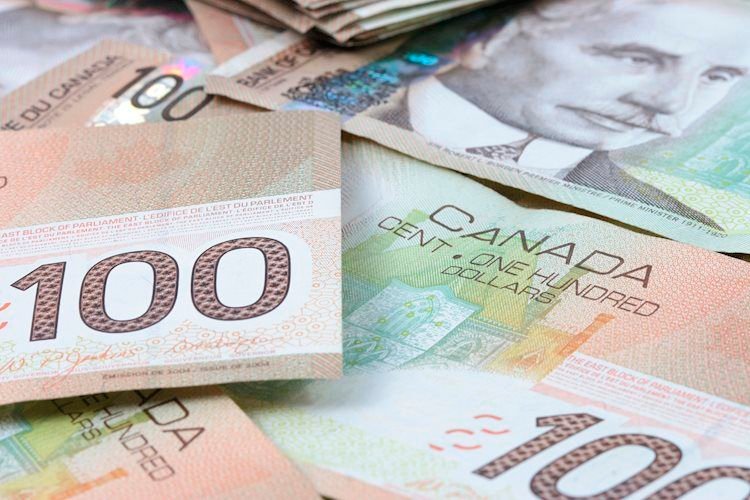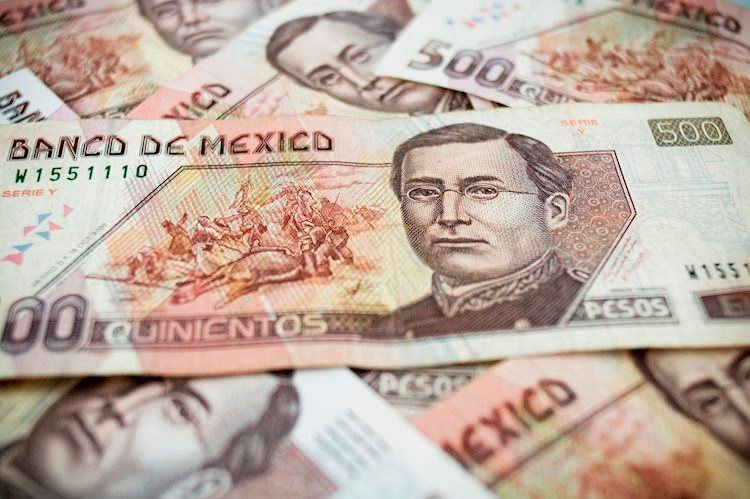- USD/CAD gains ground to around 1.3795 in Friday’s early Asian session.
- The US Retail Sales rose by 0.4% MoM in September vs. 0.1% prior, stronger than expected.
- The rising expectation of a BoC rate cut could undermine the CAD, but higher crude oil prices might cap its downside.
The USD/CAD pair trades with mild gains around 1.3795 during the early Asian session on Friday. The further upside in the Greenback amid the stronger US economic data provides some support to the pair. Later on Friday, the US Building Permits and Housing Starts will be released. Also, the US Federal Reserve’s (Fed) Raphael Bostic, Neel Kashkari and Christopher Waller.
The US Retail Sales surprised to the upside in September, boosting the US Dollar (USD) broadly. Data released by the US Census Bureau on Thursday revealed that retail sales in the US rose by 0.4% MoM in September from a 0.1% rise in August. This figure came in stronger than the expectations of a 0.3% monthly gain. Meanwhile, Retail sales excluding autos came in at 0.5% MoM in September versus 0.2% prior, above the market consensus of 0.1%.
Signs of the economy’s resilience will trigger expectations for a smaller 25 basis points (bps) rate cut in November. According to the CME FedWatch tool, the markets have priced in a nearly 90.3% chance of a 25 bps Fed rate reduction in November. Goldman Sachs analysts said they expect the Fed to deliver consecutive 25 bps rate cuts from November 2024 through June 2025 to a terminal rate range of 3.25-3.50%.
On the other hand, the rising bets that the Bank of Canada (BoC) would accelerate its easing cycle after September’s inflation data might weigh on the Canadian Dollar (CAD). Earlier this week, Statistics Canada showed the Canadian Consumer Price Index (CPI) rose 1.6% YoY in September, the slowest annual pace of inflation since February 2021. However, the ongoing geopolitical tensions in the Middle East might lift the crude oil prices and support the commodity-linked Loonie as Canada is the largest oil exporter to the United States.
Canadian Dollar FAQs
The key factors driving the Canadian Dollar (CAD) are the level of interest rates set by the Bank of Canada (BoC), the price of Oil, Canada’s largest export, the health of its economy, inflation and the Trade Balance, which is the difference between the value of Canada’s exports versus its imports. Other factors include market sentiment – whether investors are taking on more risky assets (risk-on) or seeking safe-havens (risk-off) – with risk-on being CAD-positive. As its largest trading partner, the health of the US economy is also a key factor influencing the Canadian Dollar.
The Bank of Canada (BoC) has a significant influence on the Canadian Dollar by setting the level of interest rates that banks can lend to one another. This influences the level of interest rates for everyone. The main goal of the BoC is to maintain inflation at 1-3% by adjusting interest rates up or down. Relatively higher interest rates tend to be positive for the CAD. The Bank of Canada can also use quantitative easing and tightening to influence credit conditions, with the former CAD-negative and the latter CAD-positive.
The price of Oil is a key factor impacting the value of the Canadian Dollar. Petroleum is Canada’s biggest export, so Oil price tends to have an immediate impact on the CAD value. Generally, if Oil price rises CAD also goes up, as aggregate demand for the currency increases. The opposite is the case if the price of Oil falls. Higher Oil prices also tend to result in a greater likelihood of a positive Trade Balance, which is also supportive of the CAD.
While inflation had always traditionally been thought of as a negative factor for a currency since it lowers the value of money, the opposite has actually been the case in modern times with the relaxation of cross-border capital controls. Higher inflation tends to lead central banks to put up interest rates which attracts more capital inflows from global investors seeking a lucrative place to keep their money. This increases demand for the local currency, which in Canada’s case is the Canadian Dollar.
Macroeconomic data releases gauge the health of the economy and can have an impact on the Canadian Dollar. Indicators such as GDP, Manufacturing and Services PMIs, employment, and consumer sentiment surveys can all influence the direction of the CAD. A strong economy is good for the Canadian Dollar. Not only does it attract more foreign investment but it may encourage the Bank of Canada to put up interest rates, leading to a stronger currency. If economic data is weak, however, the CAD is likely to fall.
























